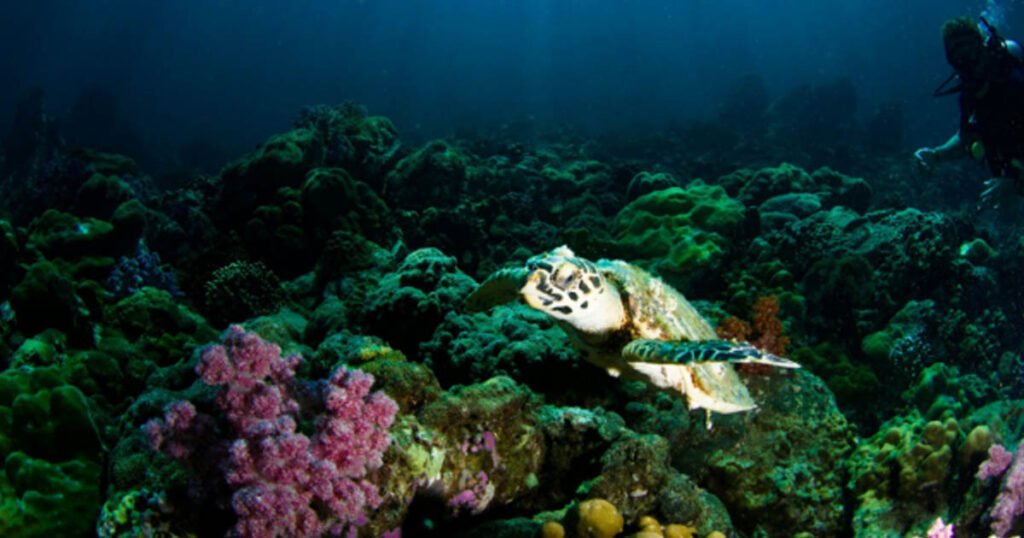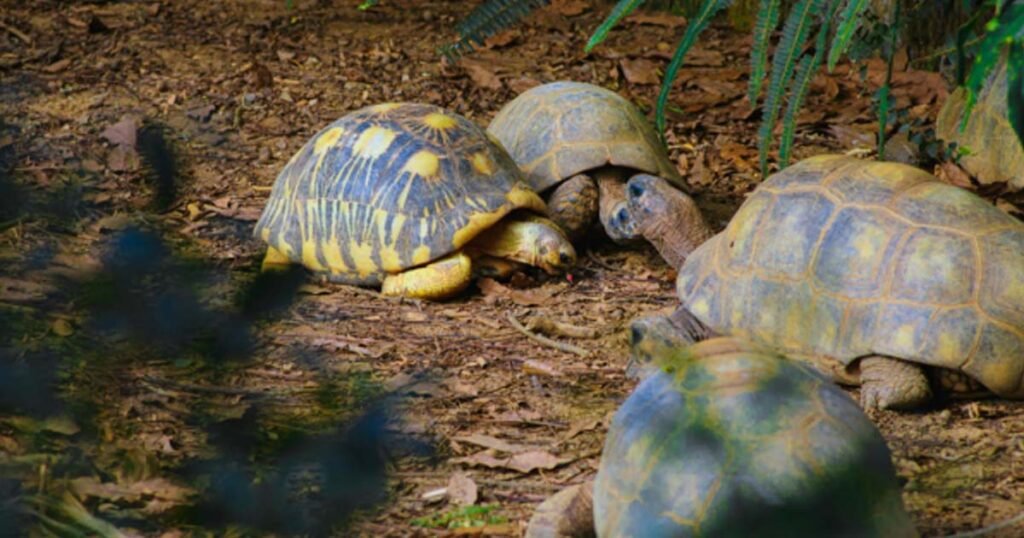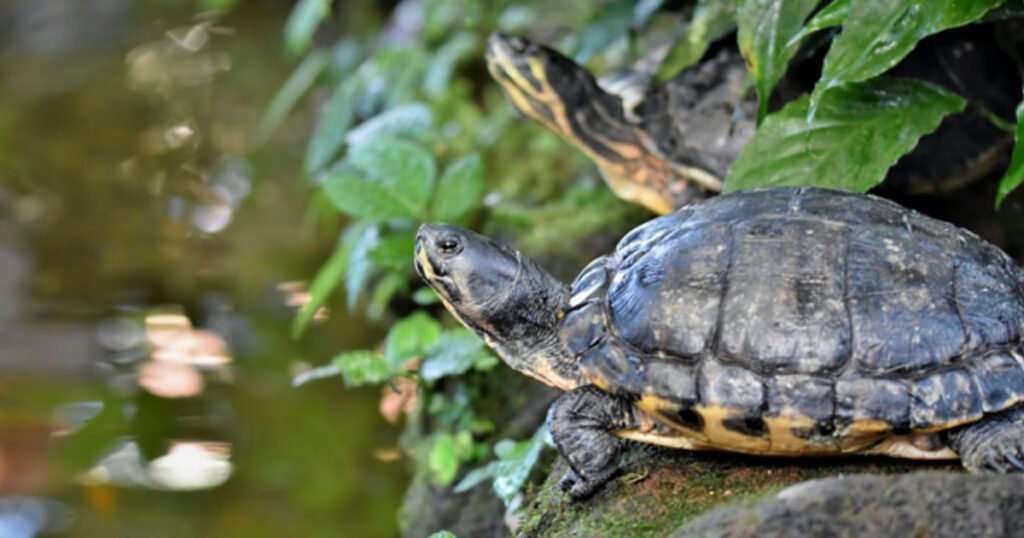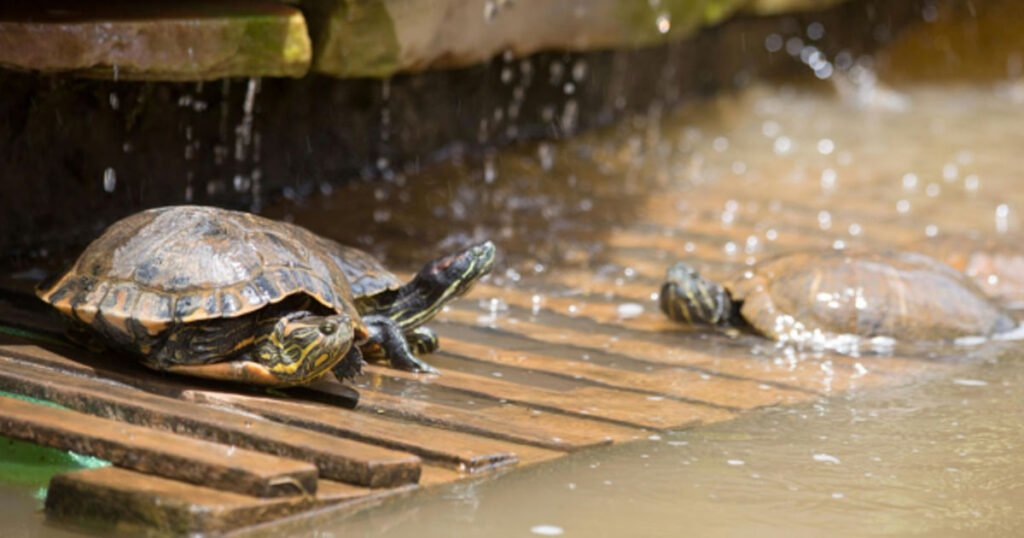Hibernation, often known as dormancy, is nature’s way of protecting cold-blooded species (and certain warm-blooded animals) in cold weather or when food and water are few. The species is more prone to hibernate farther away from the equator than closer to it.
Do pet turtles hibernate? Yes, pet turtles can hibernate—but only if you allow them to. You may simply prevent hibernation by maintaining them at the right temperature. If you are unclear about your pet, speak with your veterinarian or a herpetological society to learn how to create the optimum conditions for a successful hibernation.
If you have recently bought a turtle or tortoise, or if you have one that is ill or recovering, or a hatchling under three years old, do not hibernate them; this group is extremely vulnerable to death if permitted to hibernate.
Do Pet Turtles Hibernate?

So, Do pet turtles hibernate? Whether pet turtles hibernate relies on various factors, including species, environmental conditions, and individual health. In captivity, some pet turtles may show behaviors similar to hibernation, while others may not hibernate at all. Here are some considerations:
- Species: Some pet turtles are more likely to hibernate than others. For example, box turtles are known to undergo hibernation in the wild and may also hibernate in captivity if provided with suitable conditions. Aquatic turtles like red-eared sliders or painted turtles may not hibernate in captivity if kept in a regularly warm environment with access to food and light year-round.
- Environmental Conditions: The availability of suitable hibernation conditions can affect whether pet turtles hibernate. If the temperature in their enclosure goes below a certain threshold and daylight hours decrease, turtles may enter a state of dormancy similar to hibernation. Providing a cooler setting and reducing the length of lighting can mimic natural conditions conducive to hibernation.
- Health and Feeding: The health and feeding state of pet turtles can also impact whether they hibernate. Turtles that are in good health and have eaten adequate food leading up to the winter months may be more likely to hibernate. Conversely, turtles that are underweight or have health issues may not hibernate or may have trouble surviving hibernation.
- Captivity vs. Wild Behavior: It’s important to recognize that the hibernation behavior of pet turtles in captivity may vary from their wild counterparts. Factors such as artificial heating, constant access to food, and lighting may affect their natural hibernation habits.
Pet turtle owners should study the specific hibernation tendencies of their turtle species and provide appropriate care based on their individual needs. Consulting with a veterinarian experienced in reptile care can also offer advice on whether hibernation is suitable for a particular pet turtle and how to support it safely if necessary.
The Science Behind Turtle Hibernation
Do pet turtles hibernate? The answer is yes, turtle hibernation, also known as brumation, is a fascinating occurrence based on the biological adaptations of these reptiles to survive harsh environmental conditions.
During hibernation, turtles enter a state of dormancy marked by reduced metabolic activity, decreased heart rate, and lowered body temperature. Several factors drive the science behind turtle hibernation:
- Temperature Sensitivity: Turtles are ectothermic, meaning they depend on external sources of heat to regulate their body temperature. As temperatures drop during the winter months, turtles experience a decline in metabolic rate, which helps conserve energy. This slowdown in metabolism allows turtles to survive for extended periods without food or water.
- Environmental Cues: Environmental cues such as temperature and photoperiod (day length) play a key role in triggering hibernation in turtles. As temperatures decline and daylight hours shorten, turtles sense these changes and prepare for hibernation by seeking out suitable hibernacula (hibernation sites) where they can safely survive the colder months.
- Physiological Adaptations: Turtles undergo physiological changes to cope with the pressures of hibernation. For example, they may accumulate fat reserves during the warmer months to sustain them through times of reduced food availability. Additionally, turtles may seek out sheltered locations, such as burrows or underwater refuges, to protect themselves from freezing temperatures and possible predators.
- Respiratory Adaptations: One of the remarkable aspects of turtle hibernation is their ability to live long periods without access to oxygen. As their metabolic rate decreases, turtles can reduce their oxygen consumption and depend on anaerobic metabolism to meet their energy needs. Some species of turtles can even extract oxygen from water through specific anatomical features, such as cloacal respiration.
Understanding the science behind turtle hibernation provides insights into their remarkable ability to live in challenging environments. By adapting to seasonal changes and employing various tactics to conserve energy, turtles have evolved to live in diverse habitats worldwide.
How Long Do Pet Turtles Hibernate?

Turtles, like other animals, take a rest during the cold winter months, which we call hibernating. How long turtles hibernate can vary based on where they live and what type of turtle they are. Some turtles, like box turtles, might hibernate for several months, from late fall to early spring.
Others, like aquatic turtles such as red-eared sliders, might not sleep as long because they live in warmer places or water, which stays a bit warmer than the air. The length of hibernation also relies on how cold it gets and how much food is available. So, while some turtles might sleep through the winter for a few months, others might not rest at all or just take short naps.
How Do Turtles Hibernate?

Turtles hibernate in a way that’s a lot like taking a long nap during the winter. When temperatures drop and sunny hours get shorter, turtles know it’s time to slow down. They find a cozy spot, like underground burrows, mud at the bottom of ponds, or hidden places in their habitat. Then, they settle in for a long rest.
During hibernation, their body slows down a lot. Their heart rate drops, they breathe less often, and they don’t move around much. This helps them save energy when food is scarce and it’s too cold to be busy.
Turtles might sleep like this for several weeks or even months, based on where they live and how cold it gets. When spring comes and things warm up again, turtles wake up from their slumber, ready to come out and explore their world once more.
How Do Turtles Hibernate In The Water?

Turtles that hibernate in water, such as aquatic species like red-eared sliders or painted turtles, have unique ways of surviving the winter months. When the temperature drops and daylight hours decrease, these turtles prepare for hibernation by finding suitable spots in their aquatic environment.
They might burrow into the mud at the bottom of ponds, lakes, or slow-moving streams, or they may seek out submerged vegetation or rocky crevices for protection.
Once settled, these turtles enter a state of inactivity similar to hibernation on land. Their metabolism slows down, their heart rate drops, and they become less active. While underwater, they can receive some oxygen through their skin and cloaca, a special opening used for waste elimination and reproduction.
This allows them to conserve energy and live without needing to come to the surface for air as frequently. When temperatures warm up in the spring, these aquatic turtles gradually become more active and emerge from their hibernation sites to restart their normal activities.
Do Pet Box Turtles Hibernate?
Yes, pet box turtles may hibernate, especially if they are kept in outdoor enclosures or if their indoor home mimics natural environmental conditions. In the wild, box turtles are known to hibernate during the colder months of the year to escape harsh conditions.
If you have a pet box turtle and you live in an area with major seasonal temperature changes, it’s essential to provide them with appropriate conditions for hibernation if you choose to let them hibernate.
This includes ensuring they have access to a suitable hibernation site, such as a box filled with slightly moist substrate or an outdoor burrow, and monitoring environmental conditions to ensure they stay safe throughout the hibernation time.
However, some pet box turtles may not hibernate, especially if they are kept in a controlled indoor environment where temperatures remain relatively stable year-round. In such cases, it’s important to provide them with a consistent temperature, appropriate lighting, and a regular feeding schedule to maintain their health and well-being.
Do Pet-Painted Turtles Hibernate?
Pet-painted turtles, like their wild cousins, may also hibernate under certain conditions. Painted turtles are semi-aquatic and often inhabit ponds, lakes, and slow-moving streams in the wild, where they may hibernate underground during the winter months.
If you have a pet painted turtle and you live in an area with distinct seasons and temperature changes, they may show hibernation behaviors if provided with suitable conditions. This could include having access to a good hibernation site within their enclosure, such as a deep area of water or a spot with substrate where they can burrow, and experiencing temperature and light changes that mimic natural seasonal patterns.
However, painted turtles kept as pets indoors may not hibernate if they are kept in a controlled environment where temperatures stay stable year-round. In such cases, it’s important to provide them with appropriate lighting, heating, and a consistent feeding schedule to support their health and well-being.
Read More: Are Turtles Social Animals: A Comprehensive Guide
